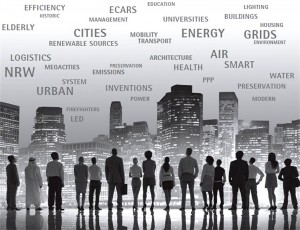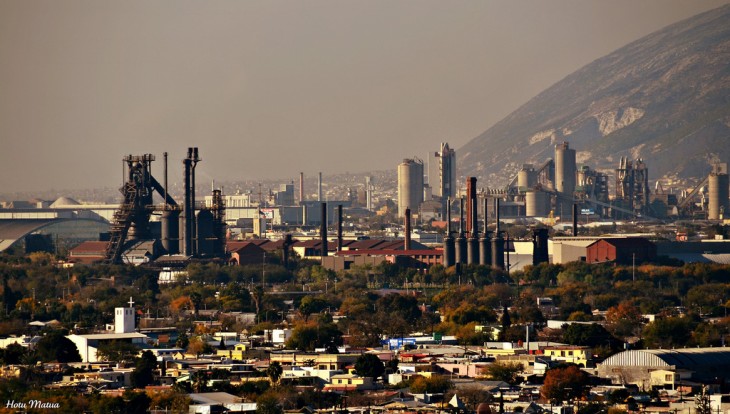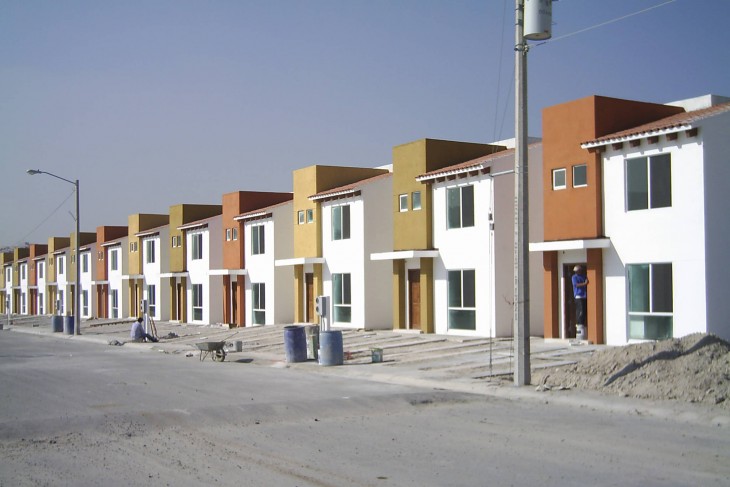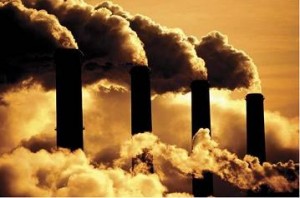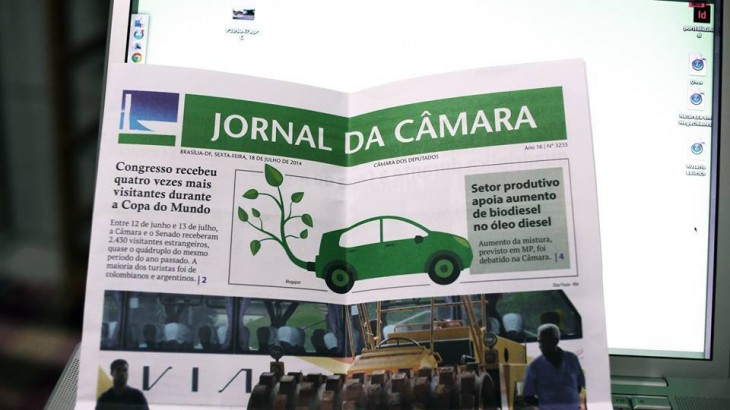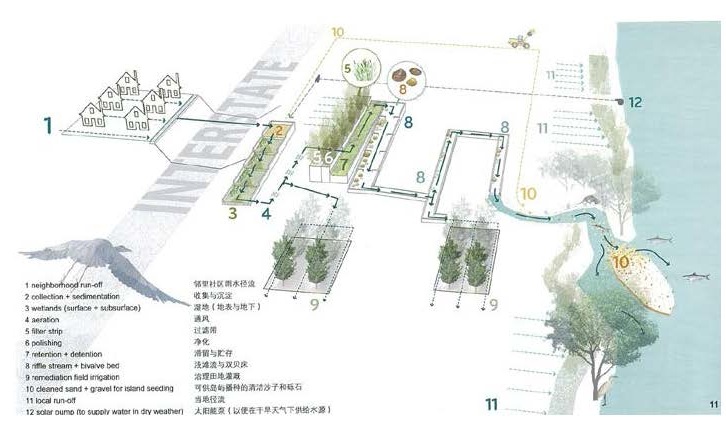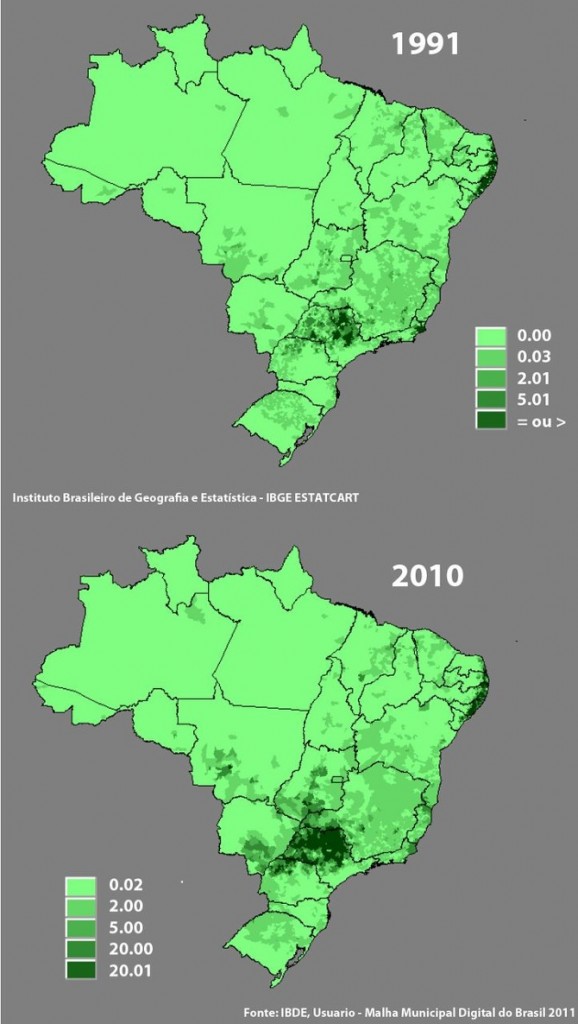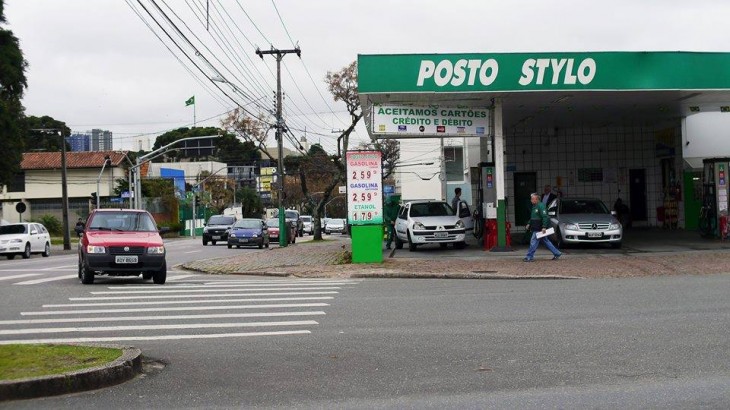source: http://www.urenio.org/2012/04/02/current-smart-city-research-projects-in/ Read More
TORONTO’S EXTREME DENSIFICATION : A CITY CORE FACING CHALLENGES

https://megacitycondos.files.wordpress.com/2013/02/high-rise-construction1.jpeg
Toronto, the largest city in Canada located on the shore of Lake Ontario, has been going through a major metamorphosis, a significant one that reminds us of New York City in the mid-20th century. Indeed, its current tendency of population growth is projecting from 6.3 million in 2011 to 9 million by 2036 in the Greater Toronto Area. Without doubt, within 20 or 30 years, the GTA is expected be the fourth biggest metropolitan area in North America surpassing Philadelphia, Dallas and even Chicago with Los Angeles, New York and Mexico City on the top of the list.
Ontario (provincial) government has imposed an absolute restriction of urban sprawl beyond the “Greenbelt” a permanently protected strip of natural heritage land since 2005, including over 700 thousands hectares of nature, forest and farmlands, in order to contain this dramatic demographic growth within existing footprint, to minimize the impact on the environment. ( Toronto has to reduce its greenhouse gas emissions by 80% by mid 21st century.) Indeed, while this greenbelt is the most successful one in the world, its effective containment of urban sprawl within the limit has a direct impact on the densification of the city core. Actually, the downtown densification is merely a very recent shift in the demographic flow, since less than eight years; many decades prior, major exodus for seeking suburban life seemed to be the trend, however the vector is clearly now reversed to the opposite direction. Beyond the Greenbelt legislation, truth is that many other factors are contributing to this shift, combined with the trendy highly-educated/skilled younger population of “echo boomers” seeking for a more convenient location to live in term of easy access to transit, work and amenities, instead of more affordable housing in the outer suburbs. The new generation is more likely to change career than the baby boomers, which leads to seeking commuting flexibility. This desire for these young people or the large waves of immigrants with economic resource, to live in or nearby the city core has thus led to this demographic return to the urban core. Consequently, additional to the 50 thousands new condo units in downtown core that have all been built, sold and occupied from 2000 to 2011, from when 90 thousands extra units have been approved as of 2013.
MONOPOLY
“Monopoly is an American-originated board game originally published by Parker Brothers. Subtitled “The Fast-Dealing Property Trading Game”, the game is named after the economic concept of monopoly—the domination of a market by a single entity. It is produced by the United States game and toy company Hasbro. Players move around the game board buying or trading properties, developing their properties with houses and hotels, and collecting rent from their opponents, with the goal being to drive them into bankruptcy.” ¹
The Industrial City.
1.1
Monterrey, Nuevo León; Is a city in the north of Mexico, historical renowned as one of the most developed industrial cities, and with a huge influence in the national issues, because his relevant inside the national economy, in the last 30 years the city has experienced a significantly increment in the number of industries, and its capacity and the volume of production. This increment is not only connected with the expansion of the existing industry, also with de apparition of new industries as a consequence of the investment of foreigner capital and from others region of the country; and too with the presence of new markets of commercial interchange of products in the global economy. Mainly in the mid 90’s the sign of the TLC, between de countries of North America: United States, Canada and Mexico, with the interest of open the borders for an international import and export policies without fees or with a lower fees. Nowadays, the industries with a headquarters from Asia, especially the related with the auto motor and its derivate; In the same way, caused by the impulse that the national government is enforced to the process and international cooperation, in the objective and the interest of investment and the employment generation.
Employment opportunities.
By generating completely new opportunity areas, growth for obvious reasons, demands that the workforce been sufficient in quantity and technical expertise, to meet its operating needs, sourcing, production, distribution, sales, etc. Consequently there is a considerable increase in labor supply; in an emerging economy, with notable and significant social differences and where the lack of opportunities for those who are part of the social base, seeking better living conditions generally reflected in the use of employment opportunities in other regions. This phenomenon has been driven largely by industrial growth described above, and the search for alternative younger people, for their academic and professional training in universities and colleges.
Development of education options.
The educational options increase, they diversify and new fields of research are now open in both public and private schools, since education is geared to the needs of the existing range of work dictated by the growing industry. The quality level of education that is developed, is now attractive for certain sectors of the population not only in the same city but also attractive to the population of the rest of the country.
The city has now labor supply and high quality educational offer responding to the needs of employers, people from all over the country and some other South American countries have migrated to the city of Monterrey seeking development opportunities labor, initially only the parent migrated to the city to try his luck and once he established the family migrated too; In other examples young generations after completing their studies or professional training, decide to stay in the city and take advantage of the jobs, rather than return to their town or place of origin.
Migration + natural growing of population = housing needs.
As a consequence of this migration phenomenon, the amount of the city population increased significantly, adding to this the natural population growth that already lived in the city. Given this significant population growth, one of the main demands that had to cover was housing, and one of the big problems that the city had to faced, was that the city wasn’t ready to meet that demand, the likewise, health services and education, transport, public space , etc. didn’t meet the needs of the new status of the city.
Informality as answer.
In the 70′s one of the fastest and almost forced solutions to the need for shelter were the irregular settlements, which are understood by those populations that are set in a property which are not legally adjudicated its occupation and where illegally and precariously built without expertise on building, and without access to public services; This is due to the lack of immediate supply of housing, the city was not ready for such conditions of population and much less for the needs of it. Over the next few years were gradually meet these needs, the government began to consider these conditions and investors and developers began to see business opportunities in this new need. In the next 30 years since the development of social housing boomed thus became the only option for many to have their own place to live and do not pay rent for something that is not theirs when the amount does not differ much the price of rental, people could have their own house by paying of this amount for the next 20 years, since the cultural issues of ownership and belonging is deeply rooted in Mexican society.
Institutional respond.
Currently the city through programs that implements the federal and state governments try to meet the demand by means of affordable mortgages and these are used by housing developers to place their product, however housing produced by developers is a low cost product initially and low quality construction and is far from meeting the needs of the citizens, not to mention the lack of recreational areas and public space.
One of the most serious drawbacks of these housing developments known as social interest, is its location, because are located on the outskirts of the city and several factors are affected by this site; as are access to health services, education, social infrastructure, urban mobility and public transportation.
the deficiency and in some cases the lack of public transport, has a great impact on quality of life and welfare of the population living in these developments, the above situiation incites to use of private vehicle as transportation, with obvious consequences, as the spending that for families represents the purchase of a car, the maintenance and fuel of it.
In urban issues, the above situation, causes an increase in vehicular traffic in the city, which in turn causes vehicular congestion on major transport routes ; this at the same time, determines that the quality of public transport services, is not improving and efficiency remains very low. Currently approximate travel times on average ranges between 1 and 3 hours due to these conditions of mobility.
Another major disadvantage is that these city areas being relatively new have not educational centers, sports and services for Medical care of the population, and these are another reasons why people should be in constant motion seeking options to meet your needs basic; without considering the cost and investment of natural resources and pollution that generate all these needs by not be close to the population.
Externalities’ introduction
The conditions that have been described, induce almost systemically to a series of externalities, wich are the reason for explain the low levels in the population quality life, and we can see this mostly in the suburbs, in houses where the population lives that were built under government coverage models, and naturally the people who live in these houses are part of the workforce of the industrial and productive system of the city.
These externalities are measurable in qualitative and quantitative way, currently exist a series of studies and research in progress, whose aim is to achieve a greater understanding of the conditions of how the life develops on the outskirts of the city ; One of the most significant notes is the cost of externalities, since one of the clearest approaches that is used to give a universal outlook, is the economic one; this approach has defined certain patterns that allows us to evaluate the real cost of living in the periphery and herein lies one of the externalities they cause more impact; a home, as those that described above, has a cost of sale and/or purchase of around 16,000 usd as the initial price; As the location, and other conditions that have arisen in the following years are now a problem, the city government should develop a series of investments, fully justified just to allow the access to a series of social services to improve the life conditions of this population, such investments if they consider the total divided by the period and the number of homes that will be affected by these urban improvements, projected a price in real terms of housing around 90,000 usd, which is significant to show the impact and volume that the externalities and their effects produce, and all of these is caused by the absence or deficiency in planning, or inconsistent or limited analysis ofvthe urban conditions and the needs of certain sectors of the population.
The meta-evaluation as the way.
The evaluation process is fundamental, for the understanding and the projection of changes in the political view and the programs that the public administration promotes; naturally these decisions have been influenced by some many factors; In one hand we had the political career, or the political image of the politicians, as an actor that is finding a personal development inside de political life of the region or country; In the other hand, there are some groups with particular interest, some many times this groups are represented by the figure of business men or the corporations, and the one that complete the scene is the singular condition of the policy making, since this is carried out in a very particular and peculiar way in Mexico, all this factors takes a fundamental part inside de process..
One of the results or consequences of the above, is that measurements or assessments currently being carried out, tend to be partials or manipulated, i.e. seek to show some result that somehow benefit or promote certain conditions, with a vested interest or particular; Generally these numbers reflect a state of apparent welfare, but would yield significantly different if we do a meta-evaluation.
Consider the meta-evaluation , as a way to consider all the factors involved in urban development and growth of cities , such as Monterrey , would largely avoid or mitigate the problems described, and which are common in many cities Latin American , and would allow us to put into perspective the realities of most of the population, and put these realities above the interests of the individuals or small groups of population that are the ones with more influence of how the city will develop cause they have the wealth to do the investments, and try to project a time of change, in which all carry equal benefit, and that the achieving of this improvement are the welfare conditions and quality of life.
¹ http://en.wikipedia.org/wiki/Monopoly_%28game%2la
Pictures
1.1 http://www.skyscrapercity.com/showthread.php?t=1521750
1.2 http://trendconsultores.com/proyecto-detalle-fracresidencial.html
GLOBALIZATION AND GLOBAL WARMING
GLOBALIZATION AND GLOBAL WARMING
Sustainable development changes along with the economy and it creates a new different social behavior and the way people inhabit the territories. Awareness to the existing environmental issues and needs are necessary for the people to be mindful because life on earth has to sustain without undermining the potential of the planet to support future generations. Sustainable development requires people to focus on adjusting their awareness towards using renewable resources in order to not deplete the planet’s natural resources.
Increase in global consumers due to the technological innovation are the heart of many multi-national businesses across the world. For instance, Consider any well known international product which responds to different needs of men and women all over the world. Such products which have billions of consumers around the world would mean larger consumption of materials and energy. Also the subsequent pollution they cause to the environment. Human made pollutant from combustion, construction, mining, agriculture and warfare are increasing everyday.
According to world global consumption database (data on household consumption patterns in developing countries) roughly 4.5 billion low income people in developing countries spend 5 trillion dollars a year. Indeed, the lower consumption segments spend more than the middle and higher consumption segments combined. They Spend 2.3 trillion dollar a year on food and beverages alone. Only in transport, financial services, information and communication technology (ICT) do the two higher segments combined outspend the lower segments.
Oil accounts for a large percentage of the world’s energy consumption, ranging from a low of 32% for Europe and Asia, up to a high of 53% for the Middle East. India is the fourth largest consumer of crude oil next to USA, China and Japan.
India’s economic growth, like the other countries is closely linked to energy demand. The need for oil which is among the primary sources in meeting energy requirements, is thus projected to grow further. To meet this demand, the government has adopted several policies, like allowing 100 per cent foreign direct investment (FDI) in several segments of the sector, including petroleum products, natural gas, pipelines, and refineries.
A significant contribution to global oil demand is from developing economies like India. The demand for crude oil has been always been a derived demand. Oil is not used for direct consumption. It is mainly used as a fuel for transportation, aviation, synthetic fibres and electricity. So the demand for oil is large in strong economies. Since consumption has been continually increasing. The gap between production and demand is being fulfilled by increasing imports which aggraavates deficit situation.
Also speedy economic development and industrialization, energy demand from Asia has been one of the main contributors to higher oil prices. India trying to catch up with the development levels of west adopted an aggressive development have resisted calls to lower carbon emission to increase / improve the standard of lives of their people (where more than 400 million people have no access to electricity, energy demand is expected to more than double by 2030). Industries have to be directed to install necessary pollution control equipment in a time bound manner and legal action has to be initiated against the defaulting units.
But solving energy problems is a global responsibility that demands action by all countries. The global energy system is on an increasingly unsustainable path. Policies can make a difference but for those to be achieved implementations need to start now. On the other hand, elevated carbon dioxide emissions from industries vehicles, factories etc. have contributed to the global warming which may impact lives of millions of people. steady sea level rise, increased cyclonic activity, and changes in ambient temperature and precipitation patterns, have affected or are projected to affect the subcontinent.
Efficient use of resources and some government policy changes will help to deal with high pricing of the Oil. Similarly we have to promote electric and hybrid vehicles as they helps us to reduce our dependency on crude oil and also start awareness programmes about economical use of fuels. A very serious stringent norms should be imposed or perhaps more refined norms on automobiles to control carbon emission on manufactures and also on in-use vehicle is needed to control to the vehicular pollution. A very important factor in reducing the pollution is the introduction of alternative fuels such as LPG and CNG.
One of the major imports in India is crude oil and finding / exploring the alternatives can have positive impact on India’s economy and the environment. Alternatives to crude oil such as bio fuels such as algae based fuels, ethanol fuels, natural gas which are renewable source of energy which has a reduced emission rate should be used to reduce the import of crude oil (which is 70% of the total oil demand).
Policies need to be drafted to support the lack of technology and infrastructures to enable the use of alternative fuels and give priority to the energy problem and enhanced measures to tackle the problems. Indian Government needs to promote energy conservations and the use of non fossil fuels including nuclear and renewable energies. Steps and measures to expand the domestic oil and gas production needs to be incorporated. Underperformance of development of new wells ( bandhs and blockades included too) Has resulted in decrease in natural gas production.
Better planning of the cities to enable efficient traffic management and discourage the use of individual automobile is necessary. Encouragement to use bi-cycles by providing separate pathways. Automobile industry should develop new vehicles which uses renewable energies like solar energy Biogas etc as a fuel. By this environment will also be protected from carbon emissions. Use of cleaner technologies is a new dimension emerging rapidly for cleaner production and to increase production efficiency, and at the same time eliminate or at least minimise emission and waste at their source rather than treat them at the end of the production chain after they are generated.
Finally, Since the beginning of life on earth, the past few decades have shown a significant ecological disturbance. The evidence for rapid climate change is compelling (Sea level rise, global temperature rise, warming oceans, extreme events, glacial retreat) The fact that the biosphere is a essential system capable of sustaining life in planet, humans must apply their aptitude to working out new social arrangements which are sensitive both to the ecosystem of the biosphere and human population.
Excecutive policy of the bio energy
Since most of the countries are focusing on develop the mechanical industry over the past century and there are still a lot of inquiry for the food production. The agriculture tends to be the next promising industry in the following decades.
“Eat healthy is a basic human right!”- The Ilan County in Taiwan manifested. By 2014, the government should not only maintain food safety for consumers but also start produce healthy fruits and vegetables from upstream. Attracted by the promotion of low carbon life, more and more city dwellers in Taiwan are now yearn for settled in Babao community in Ilan county. In order to give the children a friendly environment to learn, some parents decided to moved into the community with the kids. Through integration and mutual help, the community give the children an environment to get close to the nature and respect the land to reach the ecological harmony. Among the past three years, this community have been working with the new farming resident to create a organic home. To promote evergreen farm, non-toxic and organic farm providing for school’s lunch; also to carry out the education in agricultural field. The agricultural education also led to a new type of community development from bottom to top.
At the beginning of this year I had a research trip related with eco sustainable issues in Brazil. The availability of land for urban agriculture and food production is scarce, especially in areas of great demographic concentration. Last year, data specialists Mercer found that Sao Paulo was among the cities in the Americas with the highest living costs, and with this only set to rise, it will likely be the poor that suffer most.
This is why the work of organisations like Cidades sem Fome is so valuable. Local community members are given the tools and training to start producing fruit and vegetables on unused land acquired by the organisation. This not only brings much needed quality produce and food security to the community, but it is also addressing the issue of unemployment – a constant problem in Brazil’s favelas.
Despite the fact that the Brazilian ethanol production is one-half of that in the U.S., Brazil has the most consolidated program in the world due to the following reasons:
1) the gasoline contains 25% of ethanol.
2) ethanol is available in all gas stations.
3) 50% of the car fleet is “flex fuel,” 90% of all new cars are “flex fuel” (or dual-fuel, running with any proportion of ethanol and gasoline).
Meanwhile, only 10% of ethanol is added to gasoline in the U.S. In 2010, ethanol was recognized by the U.S. Environmental Protection Agency as an advanced biofuel due to its great ability to mitigate greenhouse gas emission. In spite of good performance which ethanol in the environmental and energetic areas, the sector, which had been growing at a rate of 10% per year between 2000 and 2008, was deeply affected by the 2008 financial crisis. Currently, the growth is about 3% per year, a very low rate to meet the worldwide demand for sugar as well as the ethanol needs for the “flex fuel” cars entering the Brazilian market.
To understand sugarcane industry growth, a study was conducted using Brazilian official databases for the last two decades, and results are shown beyond. In Brazil, the area cultivated with annual crops increased by 2.7% per year during the last decade, reaching 59.1 million ha in 2010. Among the regions, the Midwest presented the highest growth in terms of areas used for annual crops (5.31% per year during the last 10 years), followed by the Southeast region (3.29% per year).
The organic agriculture movement in Brazil is in the opposite direction of producing the ethanol fuel from sugarcane.
Based on indigenous product, organic agriculture and small-scale peasant economy, the whole union including farmers, consumer, small factories and NGO producers could possibly reuse the idle space as an organized markets with their own certification system, to find a different way of food production and marketing by balancing the principle of economic and environmental means.
The agricultural production in Brazil has been separated into two ways of use- edible product and energy product. For example, there are some companies in Brazil now start to develop Biodiesel. APROBIO (Associação dos Produtores de Biodiesel do Brasil) is one of them, the main components are 75% of soya bean and 25% of waste grease. The Bio Diesel Monday is an activity related with green energy, Brazilian government will choose one company for subsidizing the biodiesel. The proportion of biodiesel has rose to 10% in 2014. Because the government also subsidize the normal diesel, the the oil price maintained balanced. The citizen usually choosing the type of diesel depends on the price instead of the sustainability.
Biodiesel can effectively solve the problem of diesel emissions. In terms of cultivation, compared to the biomass ethanol made from sugar cane, biodiesel also produce less pollution and pesticide problems. Furthermore, APROBIO chose to purchase from a small scale farming organization in order to enhance their income, estimated 83,000 families of farmer got helped. Although biodiesel is often suspected as food waste, according to statistics: there are 50% of global soy production end up in the supplement of food every year, the remaining 50% are used in the production of soybean milk and biodiesel where soybean milk production reach over 80% among these. In livestock, the demand for biodiesel per year instead of soybeans also stabilize the meat market indirectly.
Since 2008, Taiwan start to promote biodiesel from B1 (diesel blending with 1% of biodiesel), until this year, only progress to push to B2. At first the Taiwanese government seems really gathering the forces on the promotion of biodiesel. In fact, it is letting small oil refinery extract gutter oil, causing diesel B2 has impure ingredients, many vehicle after refilling fuel have issues related with engine kill. The Ministry of Economic Affairs Bureau of Energy in Taiwan even expects the closure of biodiesel in the future.
There’s no solution on earth will not bring additional problems, in the future, the electricity power should be the main power source for car, but before our car achieve the battery life, biodiesel may be a relatively clean as an alternative energy options.

